Cordillera Huayhuash – The Abode of Mountain Light |
Ever since my climbing days in the Indian Himalayas, I have been an avid reader of mountaineering stories from all around the world. There are only a handful of mountain ranges beyond the Himalayas that have captured my wildest imagination and made me want to visit. One of those ranges was in Peru called “Cordillera Huayhuash.”
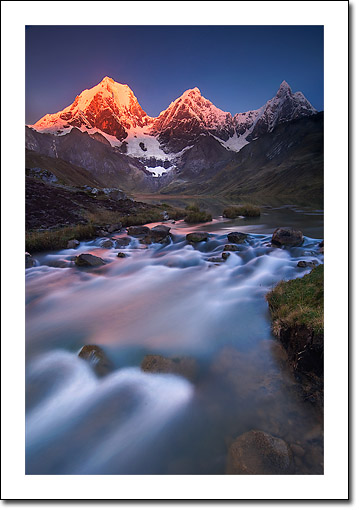
What makes Cordillera Huayhuash so special? It’s not a big mountain range after all – it’s only around 30 km long with about 35 major peaks, with only eight reaching more than 6000 meters. The draw of Huayhuash is not its scale, but rather its remote ruggedness. There are many fascinating stories of mountaineering triumphs and survival (like Joe Simpson’s Touching the Void) and the extremity of climbing associated with most of its peaks. Only a few of the smaller peaks allow easy passage to the summits while all others present formidable technical challenge for even the most daring climbers. Many seasoned hikers rate this range as one of the best place to hike in the world, but given the relative remoteness and accessibility, the Huayhuash is far less known and popular to the nature photographers than some other Andean ranges.
For photographers who don’t mind backpacking or demanding hiking and camping in the high altitude, the range is full of fantastic image opportunities. The area is less populated and visited than its northerly neighbor, Cordillera Blanca, the other very well known mountain range in the Peruvian Andes. The mountainous region was also used as a remote base for “Shining Path” (a guerrilla organization back in the ‘80s) and there were many incidents of attacks on the foreigners. Since the effective defeat of the guerrillas in the ‘90s, the range has been gradually become more and more popular with hikers and climbers, but you can still find a lot of solitude and peace as you meander through some of the most gorgeous mountain scenery found anywhere in the world.
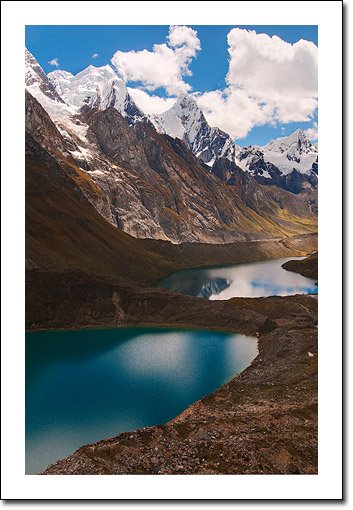
What To Shoot?
The Huayhuash is full of striking mountain peaks rising straight from the valleys with immense elegance and stark beauty. It is the home of Peru’s second highest mountain Yerupaja (6617m), the famous Siula Grande (6344m), and probably one of the most unique summits anywhere, Jirishanca (6094m). The valleys are very open and high so one can see the mountain peaks and glaciers at all time. There are also several aquatic gems – glacier-fed emerald lakes that offer terrific campsites for hikers and photographers alike. In the morning and evening, nature sets up the show with unpredictable and subtle variations of golden glow. Even on a cloudy and apparently bad days, there is a lot to look at and to be amazed as you can see low-hanging clouds and virga playing over wide open valleys and occasional sunrays piercing through creating exciting chiaroscuro lighting.
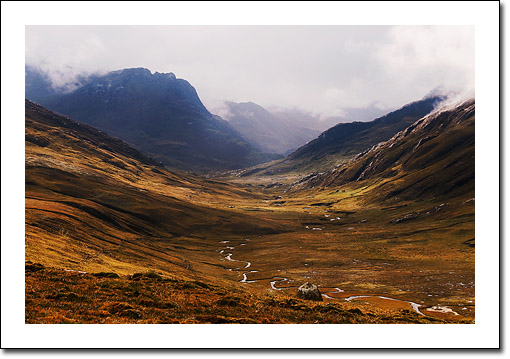
You feel like you are in a very big mountain range when you are there. Every turn of the trail opens up another world in front of you as you see serpentine rivers and streams meandering through the vast valley below and glaciated high peaks towering over ever changing patterns of clouds. Also, don’t forget the people who live inside the Huayhuash. They are really gentle and friendly people (unlike their dogs) who are mostly farmers or shepherds. They will always strike a pose or offer you a great smile if you ask them.
Then there is the wildlife, although I wasn’t very lucky to witness much of it. The most exciting prospect is probably viewing the Andean Condor, a large bird of prey that lives in the high crags. If you go in May or June, there are a lot of wildflowers all over the slopes including lupines, and in some places, the famous Peruvian Puya Raymondi plants.
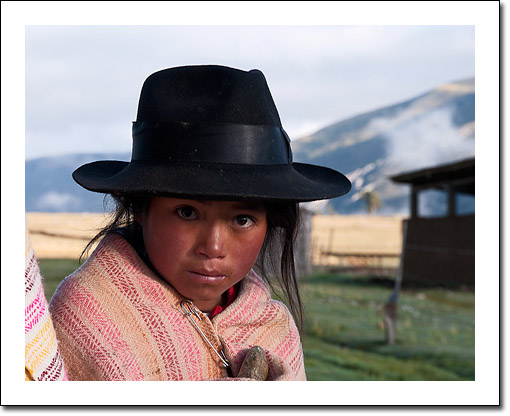
When And How To Go?
The hiking season starts in May and continues until September. I had good fortune of visiting early in the season as the campsites are less crowded and you can find a lot more tranquility on the trails. The nearest big town is Huaraz, which is also the mountaineering capital of the Peruvian Andes. Depending on which route you choose, you still have to drive another 6 to12 hours from Huaraz to reach the trailheads.
There are several hiking routes to consider:
1) You can do the full circuit, which is a circumnavigation of the full mountain range and takes 12-16 days to complete.
2) You can traverse the most interesting part of the range in a east-west direction, which takes 5-8 days.
3) If you are not into long hikes, you can simply choose between one of the two overnight hikes from either Llamac or Queropalca, which can take you to two of the most gorgeous sites of the Huayhuash – Jahuacocha and Carhuacocha Lakes.
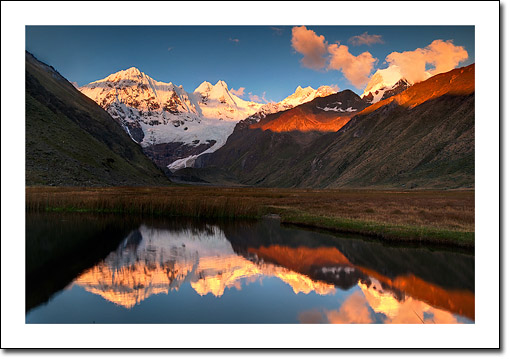
To really grasp the spirit of the Huayhuash and see the mountains in its full glory, you need to slow down and explore some of the side trips and trails that can take you deeper into the upper valleys and remote corners of the glaciers and amazing alpine lakes. The many high passes that you have to cross during your hike offer some of the most spectacular views of the range. The campsites are simply unbelievable. You are almost guaranteed to find a jaw-dropping lake, rushing mountain stream, or some other exciting foreground for your photos.
No hike in the Huayhuash can be described as easy. You will always be above 4000 meters in altitude as you walk over the passes, so you need to be well acclimatized and comfortable with challenges of high altitude trekking.
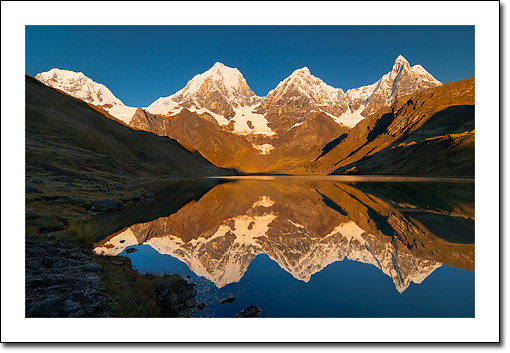
The Light
I have seen some of the most beautiful light conditions in the Huayhuash. The dusk and dawn alpenglow can not only be dramatic, but also very different here. Sometimes the peaks are partially illuminated and sometimes the subtle glow exposes an otherworldly character of the mountains. During the daytime, the puffy clouds and the blue sky provide a great contrast that can be combined with big landscapes. The lakes show off their best color during mid-day, while during morning and evening, you can catch the reflections of mountains in the still water. On a stormy and wet day, I was fascinated by the intricate sunrays piercing through the clouds, creating a rare show of light and shadow that I have never seen anywhere in my life.
Capturing that amazing light, however, can be a real challenge. The amount of equipment that you can carry will be limited, depending on your hiking style. It is also not unusual to experience wild swings in the weather: below-freezing temperatures, scorching sunrise, severe wind and rain – all within the same day. Sometimes the combination of grandeur of the place and fatigue from the long tiring hikes threaten to overwhelm your creative energy.
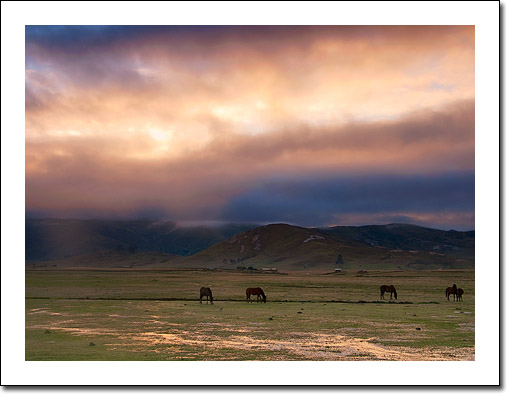
Exploring Cordillera Huayhuash has been a dream of mine for many years. When I was finally able to visit the range this year, it did not disappoint. This is truly an epic place with some spectacular scenery and mountain light.
See the full album from the Cordillera Huayhuash here in my website (http://arnabbanerjee.zenfolio.com/f524474072)
Comments on NPN nature photography articles? Send them to the editor. NPN members may also log in and leave their comments below.
Arnab Banerjee lives in the lower Hudson Valley of New York. His love of photography and nature is a long time affair and has evolved through many of the mountaineering and exploration trips to the high mountain ranges and wildernesses across the world. By profession, he is a business strategist and he spends the rest of his time making evocative and unique nature images. His writing and images have been published in many journals. More of his work can be seen at his website, http://www.arnabbanerjee.com.